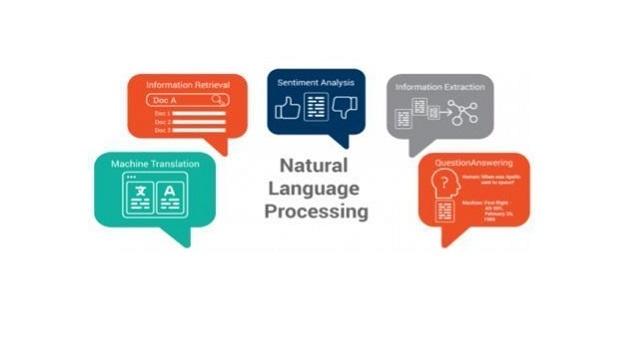NLP- Integrates unleashing the power for success and happiness. Academics is just another kingdom to deliver the essence!
The Neuro Linguistic Programming, the NLP derives the essence of learning via
Neuro: Which integrates the five senses, Visual, auditory, kinesthetic, olfactory and Gustatory. Visual includes: Sights :: Auditory defines sounds we hear:: Kinesthetic defines external feelings like touch of someone or something:: Olfactory means smell :: Gustatory means taste !
Linguistic: Defines the language and other nonverbal communication systems through which our neural representations are coded and include pictures, sounds, feelings, tastes, smells and words.
Programming: is an art to discover and utilize the instructions we run as our communication to ourselves and others to achieve our specific and desired outcomes. It is a tested and progressive model of how we communication to ourselves and others. It was originally developed by Richard Bandler, John Grinder and others.
The productivity of individuals is explored to the best via the incentives generated of experience and target vision in particular.
In academics, as a novice spectrum, the NLP integrates in discovering the art of knowing the students with their level of acceptance and learning in totality. It is like how to use the language of mind to consistently achieve our specific and desired outcomes to deliver the knowledge aimed at the students. Based on the teachers’ experience in the classrooms, the explorage is delivered via the following:
- Establishing rapport with an individual student which will enable you to help them better and create a win win situation for every one.
- Have a rapport with the group of students by using pacing and leading. Use this to turn the entire group around to your agenda while remaining in charge.
- Teaching students using the primary senses which entrails determining the primary sense system of the student and then delivering information in a way that works best for that system.
- Learning how to read students’ mind by learning how to read their eye movements.
- Exploring and identifying the balance between right brain days and left brain days. Determining which mode the class is in and then teach in a manner appropriate to the mood of the day in particular.
The subjective analysis within the classrooms attract effective communication skills by teachers and replicating them to the students at large. The concept integrates the language of the mind to consistently achieve our specific and desired outcomes. The education delivery with excellence after identifying the traits of the audience is hence an art being explored via this. This is indeed a great way to facilitate change. It allows us to be in a position where in there is no concern or a problem. The mindset is a policy here to deliver the best. Some of the ratios which govern to this aspect of curing intelligence by educators involve, a push, get out of the comfort zone, shy zone, arrange a massive paradigm shift, discuss the passion, learning to learn from the environment, must feel most alive, need to be happy in your own skin, give oneself a round of applause, empower the limiting belief and the negative emotions about self. Classroom teaching is a nourishing talent which crops with the march of time and tide. The behavioral flexibility narrates to the positive outcome only through the sensory acuity and psychology of excellence.
The teaching techniques need to excel with the ‘wow’ feature with a positive belief by the educators. The nurturing keys to an achievable outcome follow as:
- Being positive
- Specified present situation
- Specified outcome
- Specified evidence procedure
- Self initiated and self maintained
- Appropriately contextualized
- Must be ecological
The approaches govern a practical approach to “All I need is within me now !”, let the teachers approach to students with a say “Raise your hand high and tall and say YES !” to promote the sense of agility and promptness during the sessions. The excellence which we point to activates with the six human needs for our students and the educators in particular, the activation delivers via Certainty, Uncertainty/ Variety, Love & Connection, Significance, Growth and Contribution. All these replicate to confidence and deliver the power to perform. As teachers, we need to abide by the presuppositions of the NLP which act like the convenient assumptions. It is a requisite of desire to respect for the other person’s model of the world, the behavior and change are to be evaluated in terms of context and Ecology. The resistance in a client (student) is a real sign of a lack of rapport. People (pupils) are not their behaviors, Everyone is doing the best one can with the resources they have available, every behavior is motivated by a positive intent. As a teacher, one has to calibrate on behavior as the most important information about a person is that person’s behavior.
Mirroring in classrooms: As teachers the Mirroring technique of NLP distinguishes the matching portions of another person’s behavior, as in a mirror. This justifies the learning and the learner and the interest between them.
Modeling with children: This is another important technique to set the process of learning where we elicit the strategies, filter patterns and physiology that allows someone to produce a certain behavior. This can be further tackled, modelled and paced as required.
Pacing with Children: This activates the conclusion. It delivers the matching or mirroring another person’s external behavior so as to gain rapport. The joy with the kids encounter at ease and perforates learning as a resultant.
The spectrum of learning for fun gets via this NLP which suffices to the limitations of dissatisfaction among the masses, particularly the stake holders viz. the students and the parents. Activation of this would certainly result in penetration to learning as a habit rather than an occasional occurrence.
References:
https://yourstory.com/2017/02/a5ef2268e9-nlp-in-academics/
https://www.youtube.com/watch?v=wCphVA3dtEg
https://schools.entrancezone.com/nlp-in-academics-an-initiative-towards-excellence-dheeraj-mehrotra/
http://slideplayer.com/slide/8957695/
